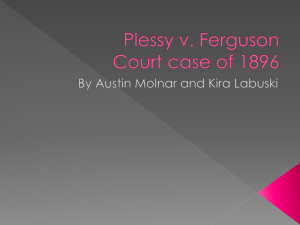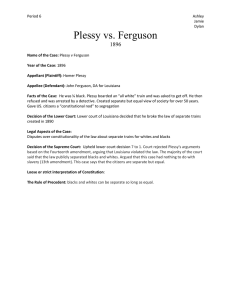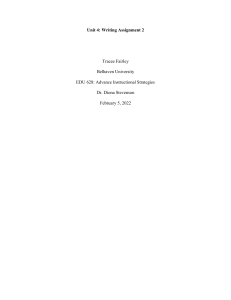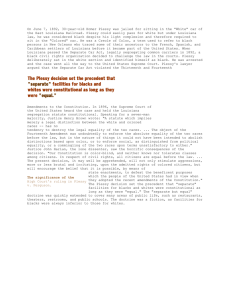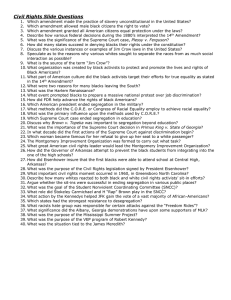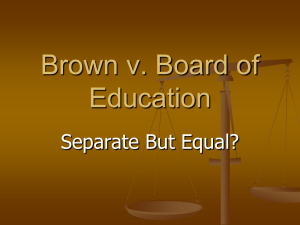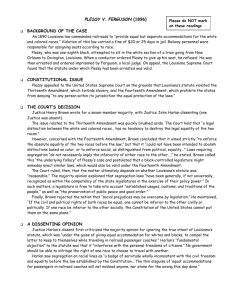PLESSY v. FERGUSON
advertisement
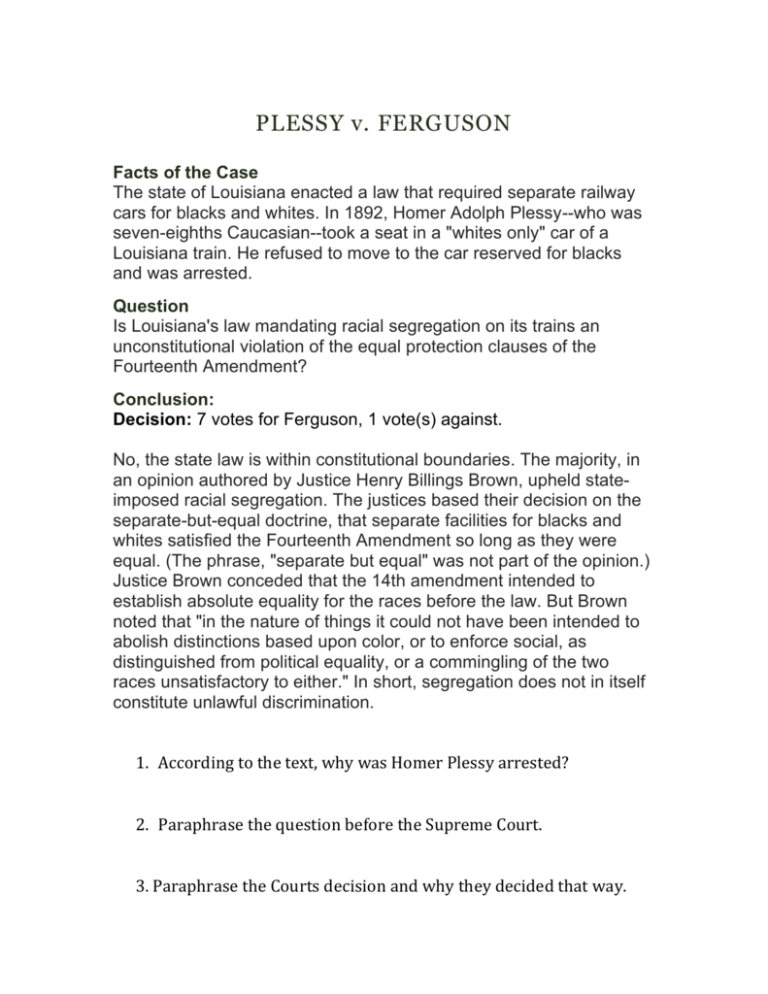
PLESSY v. FERGUSON Facts of the Case The state of Louisiana enacted a law that required separate railway cars for blacks and whites. In 1892, Homer Adolph Plessy--who was seven-eighths Caucasian--took a seat in a "whites only" car of a Louisiana train. He refused to move to the car reserved for blacks and was arrested. Question Is Louisiana's law mandating racial segregation on its trains an unconstitutional violation of the equal protection clauses of the Fourteenth Amendment? Conclusion: Decision: 7 votes for Ferguson, 1 vote(s) against. No, the state law is within constitutional boundaries. The majority, in an opinion authored by Justice Henry Billings Brown, upheld stateimposed racial segregation. The justices based their decision on the separate-but-equal doctrine, that separate facilities for blacks and whites satisfied the Fourteenth Amendment so long as they were equal. (The phrase, "separate but equal" was not part of the opinion.) Justice Brown conceded that the 14th amendment intended to establish absolute equality for the races before the law. But Brown noted that "in the nature of things it could not have been intended to abolish distinctions based upon color, or to enforce social, as distinguished from political equality, or a commingling of the two races unsatisfactory to either." In short, segregation does not in itself constitute unlawful discrimination. 1. According to the text, why was Homer Plessy arrested? 2. Paraphrase the question before the Supreme Court. 3. Paraphrase the Courts decision and why they decided that way.

